The animal kingdom is massive, to say the least. In fact, it is constantly expanding, with around 18,000 new species discovered each year! In this article, we’ll introduce you to a variety of animals with surprisingly short names. These 40 animals have common names with just four letters, from the mighty lion that roams the African savannah to the gentle deer found in forests across North America. Whether you are an animal enthusiast looking to expand your knowledge or a parent introducing the wonders of wildlife to your child, this guide is the perfect starting point. So, let’s start our journey into the world of incredible 4-letter animals!
1. Slug (Gastropoda)
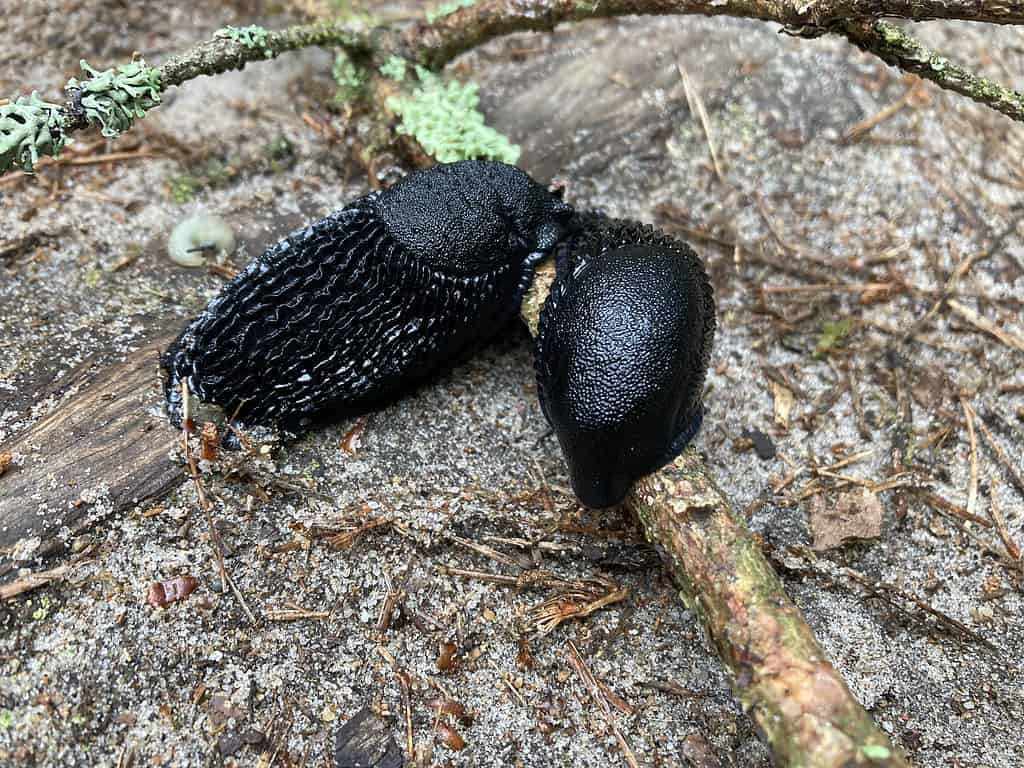
Slugs belong to the gastropod family, of which there are over 40,000 species!
©iStock.com/mdurajczyk
First up on our list of four-letter animals is the slug, a tiny creature that moves at a slow pace and has a soft, elongated body but no legs, essentially a snail minus its shell.
Also, the diet of slugs consists of leaves, decomposing materials, organic debris, fungi, and even earthworms. They usually live in gardens with dense vegetation.
2. Lynx (Felis lynx)
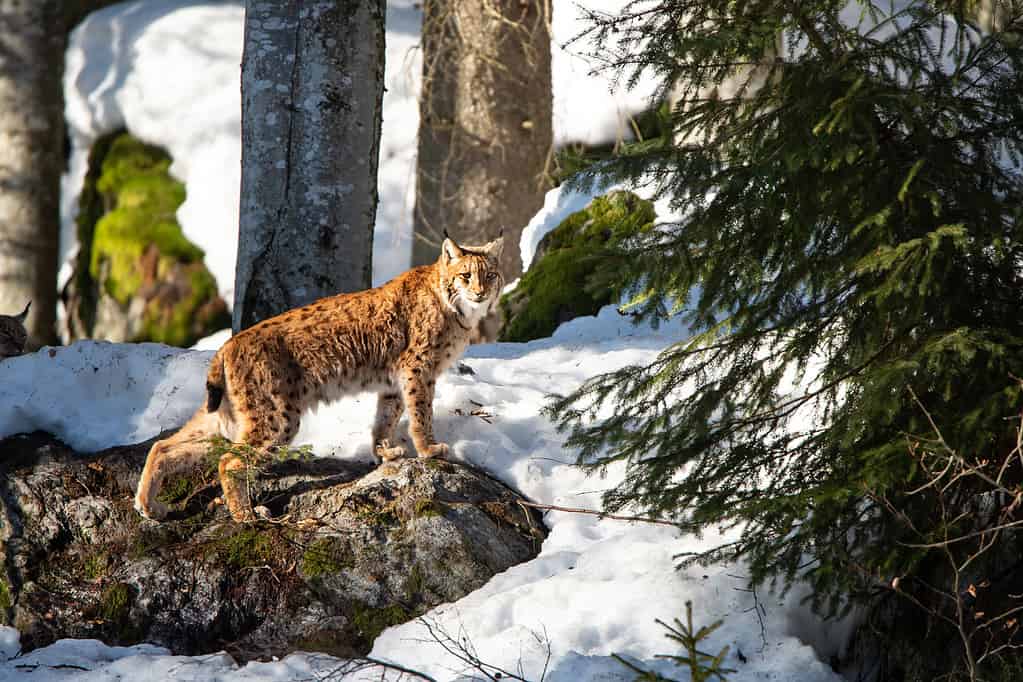
This is the Eurasian lynx, which is one of the largest lynx species. Male Eurasian lynx can weigh up to 8p pounds!
©Alexandra Giese/Shutterstock.com
Lynx have long legs, big paws, ear tufts, fur-covered feet, and a wide, flat head. Their diet mainly includes roe deer but also red deer, rodents, rabbits, birds, hares, and foxes. They usually inhabit damp, boreal woods with chilly, snow-filled winters.
3. Dory (Zeus faber)

This 4-letter animal is the dory. It may not be the most beautiful fish in the world, but it is a fascinating species.
©JRP Studio/Shutterstock.com
Dory belongs to the Zeidae family of marine fish. It has a grayish hue, yellow-circled black spots on each side, extended pelvic fins, filamentous dorsal-fin spines, and spine rows on the abdomen and at the dorsal and anal fin bases.
This active predator consumes various schooling fishes and invertebrates, inhabiting near the seabed at depths ranging from 16 to 1,200 feet.
4. Boar (Sus scrofa)

A massive wild pig species is the wild boar. These animals will eat almost anything in their path.
©David Dohnal/Shutterstock.com
Boars possess robust, muscular frames covered in a dual-layered coat of grey-brown hair – a coarse, prickly outer layer and a much softer inner layer.
They primarily consume roots, dropped fruits, nuts, and acorns but also eat small creatures. They favor both deciduous and coniferous forests and are commonly seen near agricultural lands.
5. Coot (Fulica)
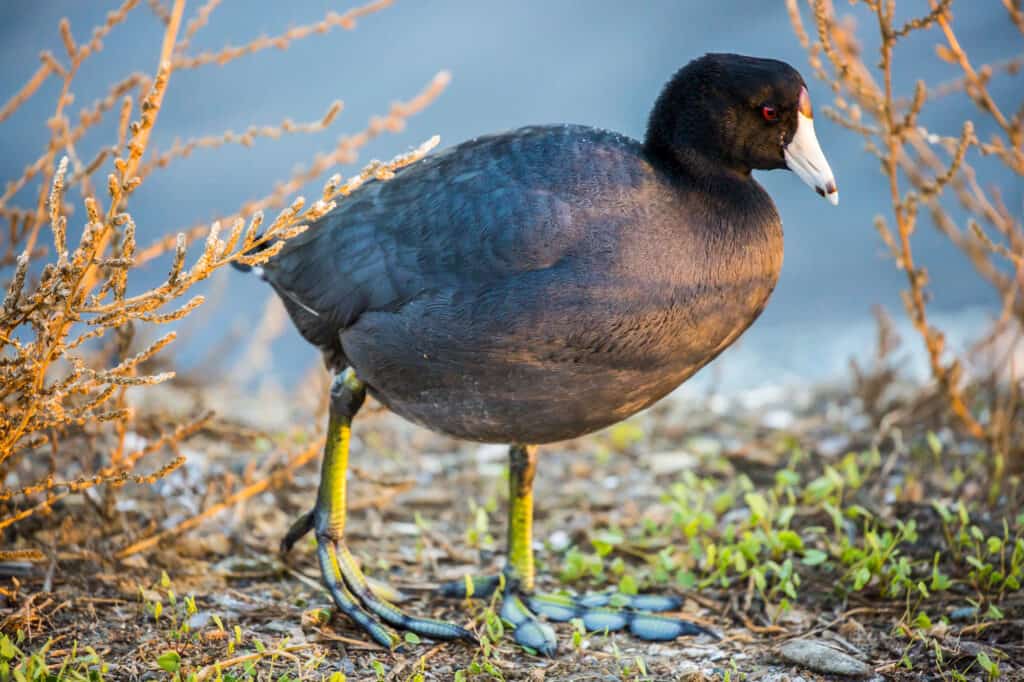
A water-dwelling bird species classified as medium-sized is the coot. They can be found in the Americas, Hawaii,
Africa
, Europe, and Asia!
©yhelfman/Shutterstock.com
Coots are aquatic birds characterized by their dark-gray to black plumage, contrasted with a striking white beak and forehead and yellow-green legs.
They are omnivorous, primarily consuming plants, and are frequently found in large freshwater bodies such as ponds, lakes, and slow rivers at lower altitudes.
6. Cusk (Brosme brosme)
Cusk is a saltwater fish resembling the cod belonging to the Lotidae family. It has a long body, a flat, wide, triangular head, a large mouth, and a single barb on its lower jaw. Furthermore, its small, embedded scales give it a slimy appearance.
It generally feeds on smelts and crayfish and is typically found in rocky, deep water areas up to 328 feet deep.
7. Pika (Ochotona)
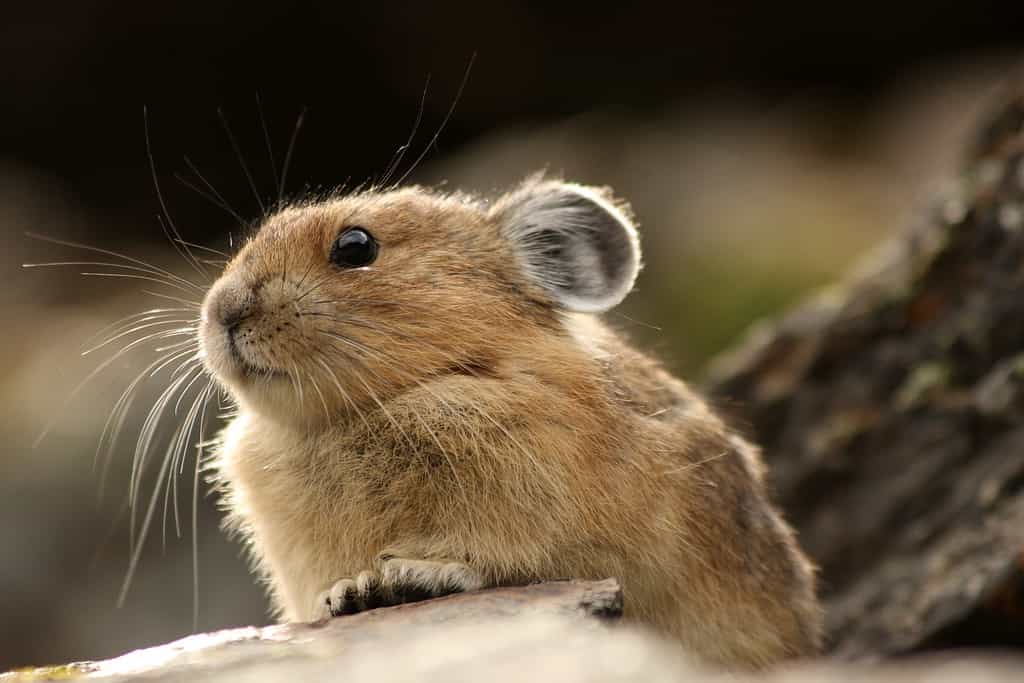
This small rodent is an American pika, which can be found in the mountainous regions of western North America.
©Adrian Baras/Shutterstock.com
Pika, a small mammal indigenous to Asia and North America, has a round body, short legs, a consistent fur coat, and no visible tail, making it resemble a rabbit with shorter, rounded ears.
It feeds on grasses, weeds, and tall wildflowers, typically found above the tree line or in rocky forest areas near lakes.
8. Zebu (Bos indicus)
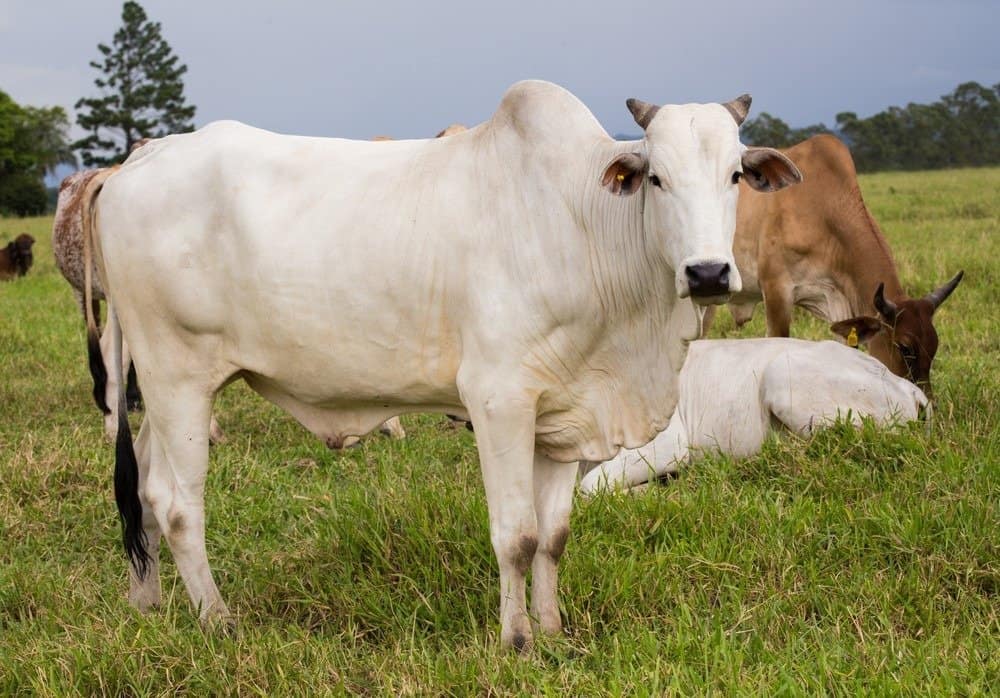
This is an ancient breed of cattle originating over 8,000 years ago. The Zebu cattle is a popular breed in Southeast Asia.
©Mostovyi Sergii Igorevich/Shutterstock.com
Zebu originated from the Indian subcontinent. These domestic cattle are recognized by their shoulder hump, extensive dewlap, and, sometimes, drooping ears.
Their primary diet is grass, but they also eat seeds, leaves, and flowers. While domesticated zebu are found globally, they are most common in Southeast Asia.
9. Bear (Ursidae)
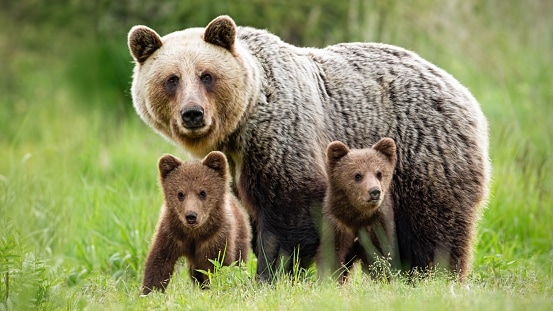
There are several species of bear in the world from the grizzly bear to the panda, and the
polar bear
, they are very diverse.
©JMrocek/iStock via Getty Images
Bears are a family of large mammals found in the Americas and Eurasia. These animals have large bodies, stout legs, elongated muzzles, small rounded ears, bushy fur, flat-soled paws with five non-retractable claws, and stubby tails.
Most bear species are omnivores, consuming a varied diet of berries, grains, fish, insects, birds, bamboo, and even other mammals. Their habitats include both coniferous and deciduous forests, as well as open alpine regions.
10. Crab (Brachyura)
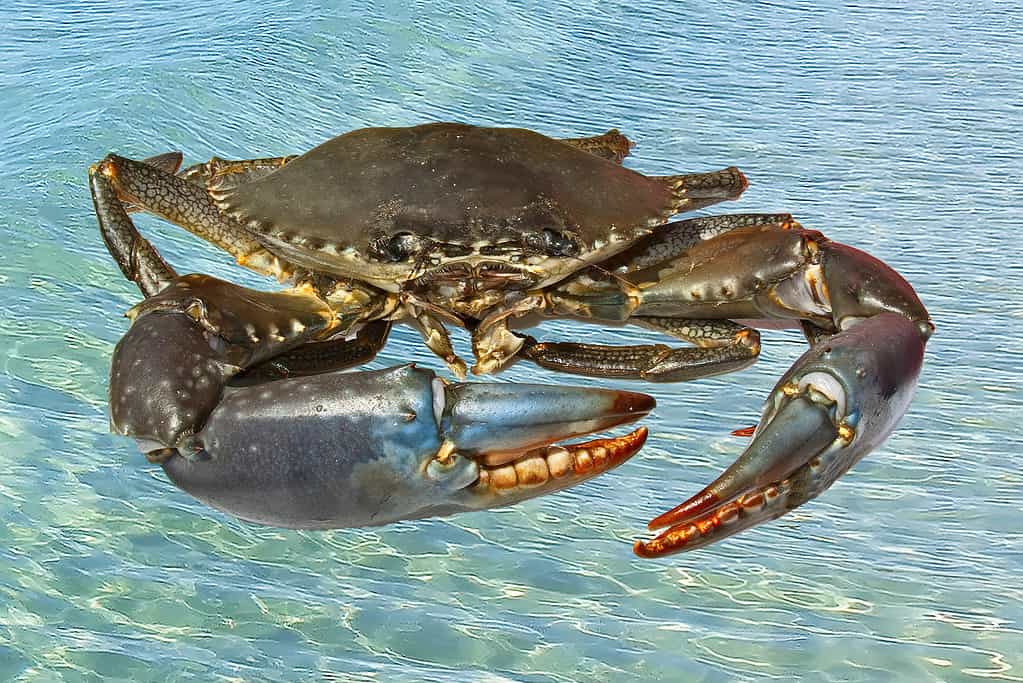
Crabs are crustaceans with a hard armored exoskeleton. They range in size from half an inch to 13 feet!
©Sunnypics-oz/iStock via Getty Images
Crabs feature a round, flat body encased in a shell and ten legs, the front pair having large pincers. They are omnivorous, mainly eating algae but also consuming mollusks, worms, and other crustaceans (including other crabs).
Found in all oceans and freshwater, some crabs even reside on land, occasionally miles away from water.
11. Deer (Cervidae)
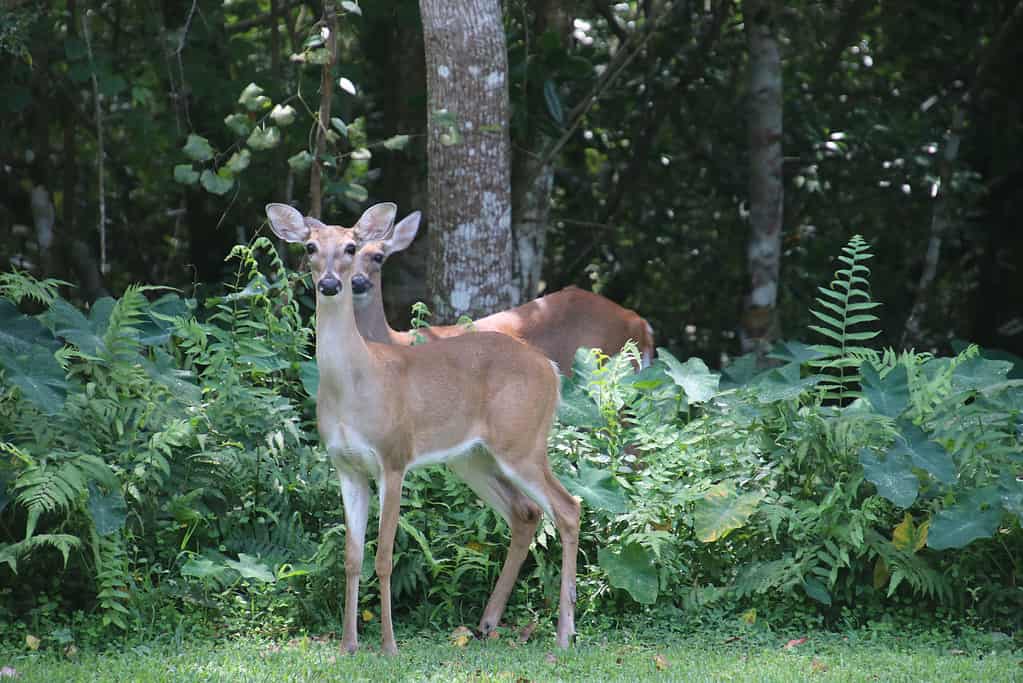
A common family of bovine mammals is the deer. There are over 35 million deer in North America alone.
©Barb Elkin/iStock via Getty Images
Deer are another common 4-letter animal. These creatures are slender mammals with long legs, usually having a coat that varies from reddish to gray-brown, as well as a cream-colored belly. They are herbivores consuming an assortment of crops, grasses, plants, acorns, and nuts.
Although adaptable to various environments, they thrive best in forested areas.
12. Ibis (Threskiornithinae)
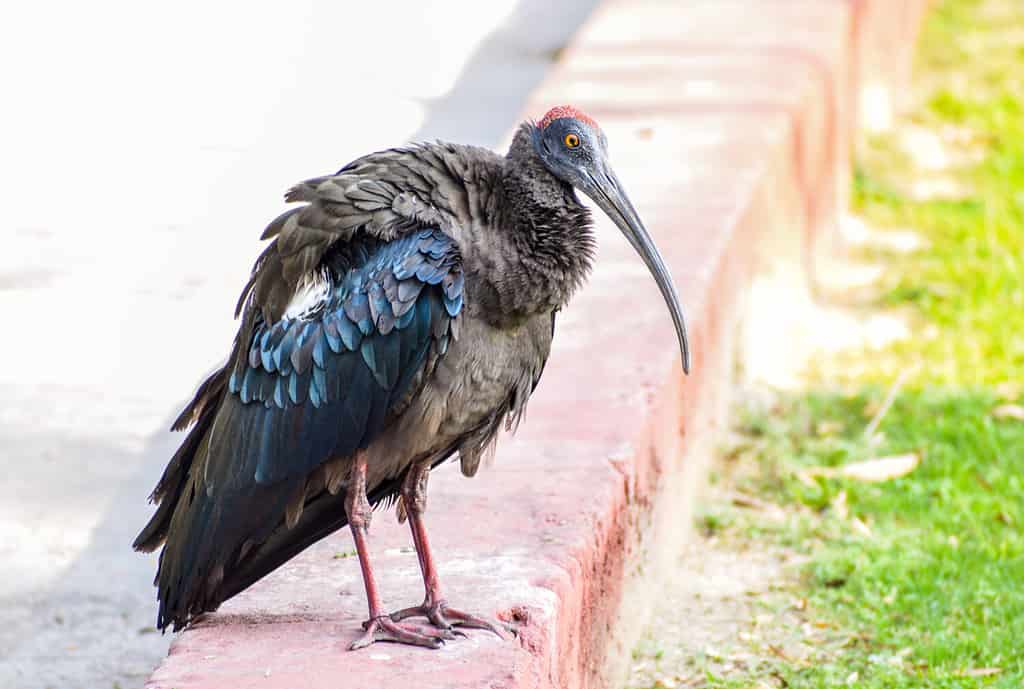
Giant ibis are the largest species of ibis. They are critically endangered and are the national bird of Cambodia.
©Azhar_khan/Shutterstock.com
While there are differences in appearances among species, all ibis birds have elongated bodies, long legs, and toes. The adults typically have white plumage, vibrant red legs, a red eye patch, and a red beak.
Their diet mainly includes crabs, crayfish, fish, snakes, frogs, and insects. These waders inhabit tropical and subtropical regions worldwide.
13. Moth (Lepidoptera)

Another 4-letter animal on this list is the Moth. There are an estimated 160,000 moth species in the world.
©Elliotte Rusty Harold/Shutterstock.com
Moth wings, bodies, and legs are coated with fine scales that shed when touched. They differ from butterflies by having more robust bodies, less vibrant colors, and unique feathery or dense antennae.
Adult moths consume liquids and need minimal food. They inhabit various environments but prefer wooded habitats.
14. Wolf (Canis lupus)
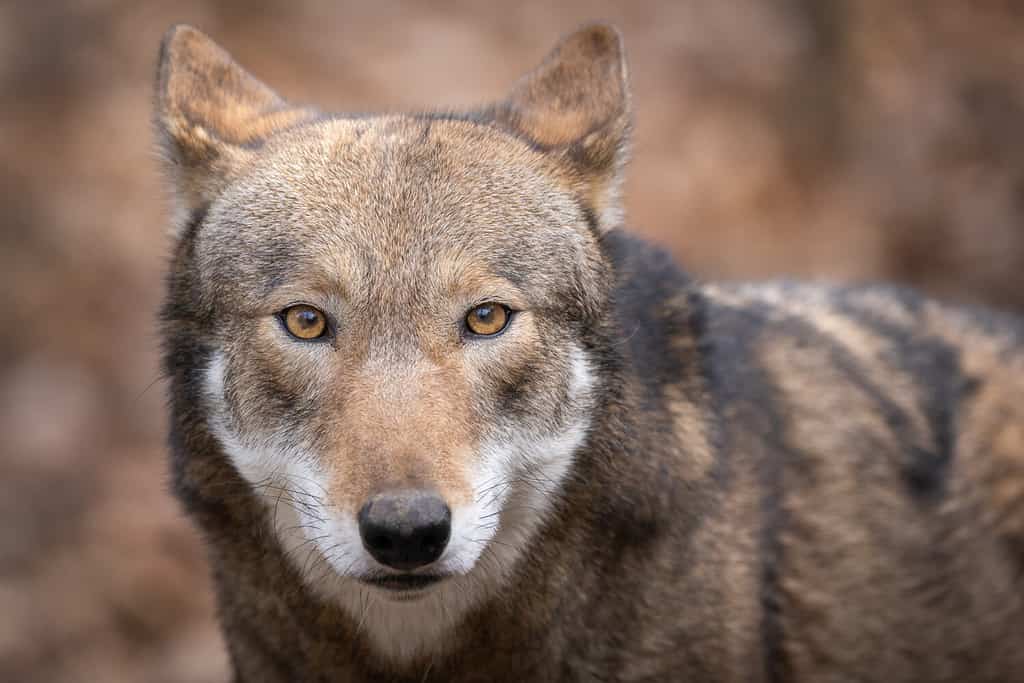
Dogs evolved from wolves.
©Matt Cuda/Shutterstock.com
Wolves are the ancestors of man’s best friend! They have elevated bodies, elongated legs, wide skulls narrowing into slender muzzles, bushy tails, and thick, dense undercoats.
As carnivores, they favor large hoofed mammals. Their adaptability is evident in their ability to thrive in diverse habitats, including temperate forests, mountains, grasslands, and deserts.
15. Seal (Pinnipedia)

A common marine animal with a 4 letter name is the seal.
©the_guitar_mann/ via Getty Images
Seals, despite differences between species, all possess fin-like feet, enabling them to be proficient swimmers. Most have thick blubber layers. Their diet, which varies among species, predominantly consists of fish, along with squid, mollusks, and crustaceans.
They are commonly found near the coastline of cold water oceans.
16. Swan (Cygnus)

One of the most beautiful species of waterfowl is the swan.
©Sharon Morris/Shutterstock.com
Swans are a bird characterized by their long necks, hefty bodies, and large feet, elegantly glide on water, and fly with relaxed wingbeats and extended necks.
They inhabit ponds, slow-moving rivers, coastal bays, and inland lakes and primarily feed on submerged aquatic plants.
17. Wasp (Vespidae)

Famous for their painful sting, wasps are a huge nuisance.
©Susan Rydberg/Shutterstock.com
Wasps are small, territorial insects with smooth exoskeletons, a large abdomen, and wings. Some wasps feed exclusively on sugars, which they obtain from flower nectar and aphid-produced honeydew, while others are carnivorous, eating dead animals and other insects.
They typically construct nests underground or in shrubs, trees, or bushes.
18. Carp (Cyprinus carpio)
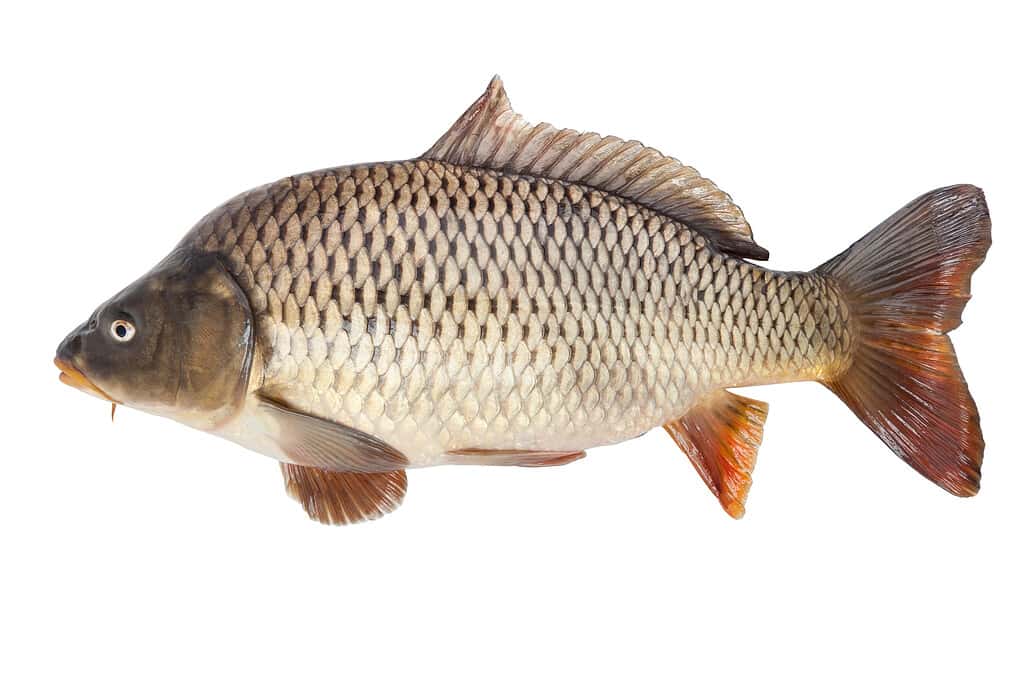
Omnivores native to Eurasia, carp are an invasive species in the USA.
©v_zaitsev/iStock / Getty Images Plus via Getty Images
Carp fish have a wide, large body, a long dorsal fin running most of their back, and a split tail fin. They are bottom-feeders with a diet that includes small organisms like mollusks, crustaceans, insect larvae, and seeds.
Carp are live in stagnant or slow-moving waters with plenty of aquatic plants.
19. Puma (Puma concolor)
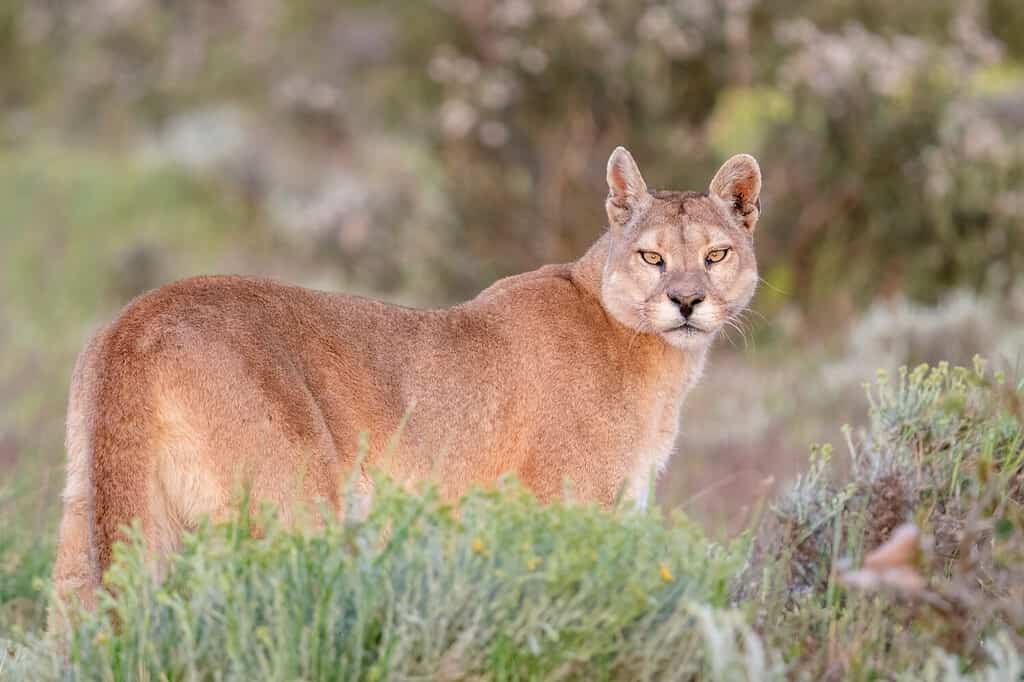
The largest cat in the western hemisphere and another animal with 4 letters is the puma.
©Rob Jansen/Shutterstock.com
Pumas are a large cat species that have a muscular frame, a long furry tail, and a flat facial structure with white patches and dark streaks. They are formidable predators, mostly consuming smaller creatures.
They can be found in mountain forests and jungles.
20. Rhea (Rhea americana)

A large flightless bird species with a 4-letter name is the rhea.
©RudiErnst/Shutterstock.com
Rheas, although resembling ostriches, are notably smaller and have three toes per foot, unlike the two-toed ostrich. They possess feather-covered heads, necks, and thighs but lack tail feathers.
These omnivorous birds favor broad-leaved plants and clovers and typically inhabit grasslands and semi-arid scrublands.
21. Mule (Equus asinus × Equus caballus)

This animal is a mix between a donkey and a
horse
.
©BalkansCat/iStock via Getty Images
A mule is the offspring of a male donkey and a female horse, featuring a blend of characteristics from both parents. It has a horse-like body and donkey-like head, ears, and hooves.
Typically, mules eat grass hay and are commonly found in agricultural regions like farms and pastures.
22. Flea (Siphonaptera)

These nasty parasites can carry all sorts of diseases, including the bubonic plague!
©Yale Peabody Museum (Daniel J. Drew), CC0, via Wikimedia Commons – License
Fleas are tiny, wingless insects with a flat body and six legs. They sport a dark red-brown hue and possess mouthparts for biting. Remarkably, a female flea can ingest blood up to 15 times her weight daily.
While they can infest any warm-blooded host, humans, cats, and dogs are their preferred habitats.
23. Pike (Esox lucius)

A large predatory marine animal with 4 letters in its name is the pike.
©Jik jik, CC BY-SA 3.0, via Wikimedia Commons – License
Pikes have long bodies, flat, bill-like snouts, and mouths filled with sharp teeth, which take up half of their head’s length. They are meat-eating fish that prey on smaller fish, frogs, crayfish, small mammals, and even birds. They inhabit various freshwater environments, from deep, cold lakes to warm, shallow ponds and muddy rivers.
24. Duck (Anas platyrhyncos)

One of the most common waterfowl in the world is ducks.
©Diana Borden/Shutterstock.com
Ducks are a species of waterfowl with short necks and legs, webbed feet for swimming, and wide, flat bills for feeding. They are omnivores, consuming water plants, insects, worms, and crustaceans. Their preferred habitats include water bodies such as ponds, lakes, marshes, rivers, and even seas.
25. Crow (Corvus)
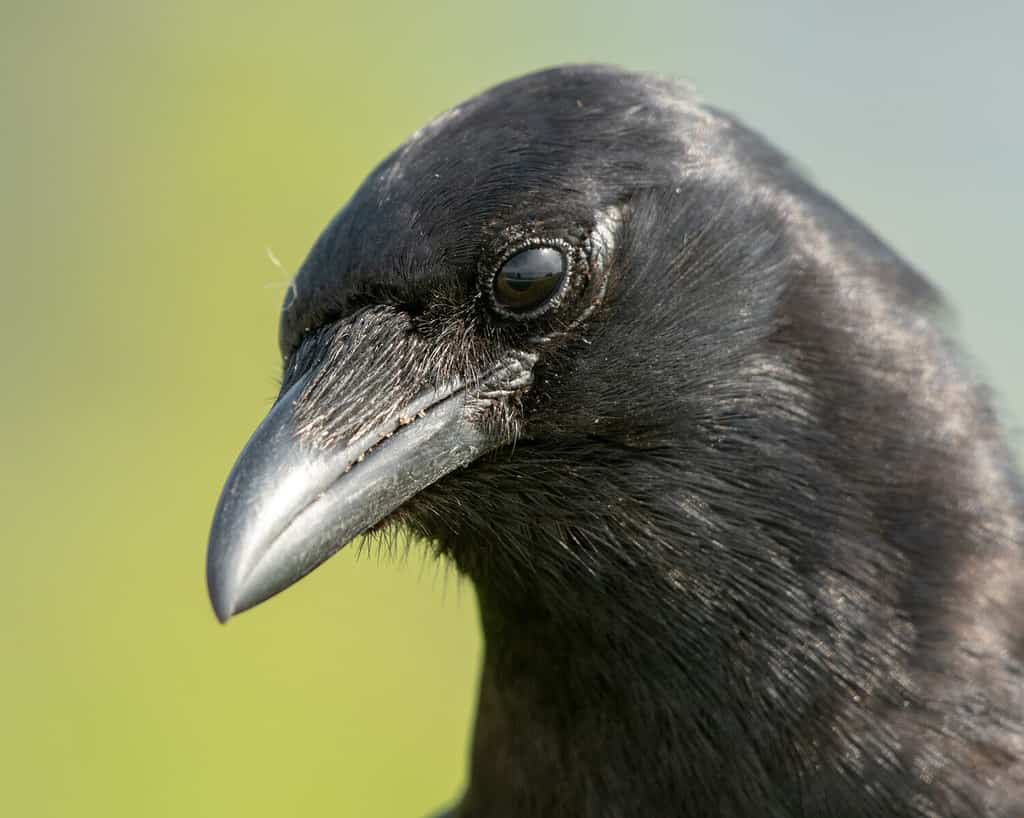
This bird species is extremely intelligent.
©Courtenay Harding/Shutterstock.com
Crows are black birds of medium to large size, with varying colors from black or grey to more colorful patterns. They are omnivorous and have a varied diet, consuming almost anything they come across. They typically inhabit open or semi-open regions. Interestingly, crows are one of the smartest animals, and scientists have even observed crows building and using tools!
26. Wren (Troglodytidae)

There are around 88 different species of wren.
©iStock.com/randimal
The wren is a small, almost round bird with a thin beak, relatively long legs and feet, short rounded wings, and a slender tail often held upright.
It primarily consumes small insects and can be found in open woodlands, shrubs, urban areas, and gardens.
27. Lion (Panthera leo)
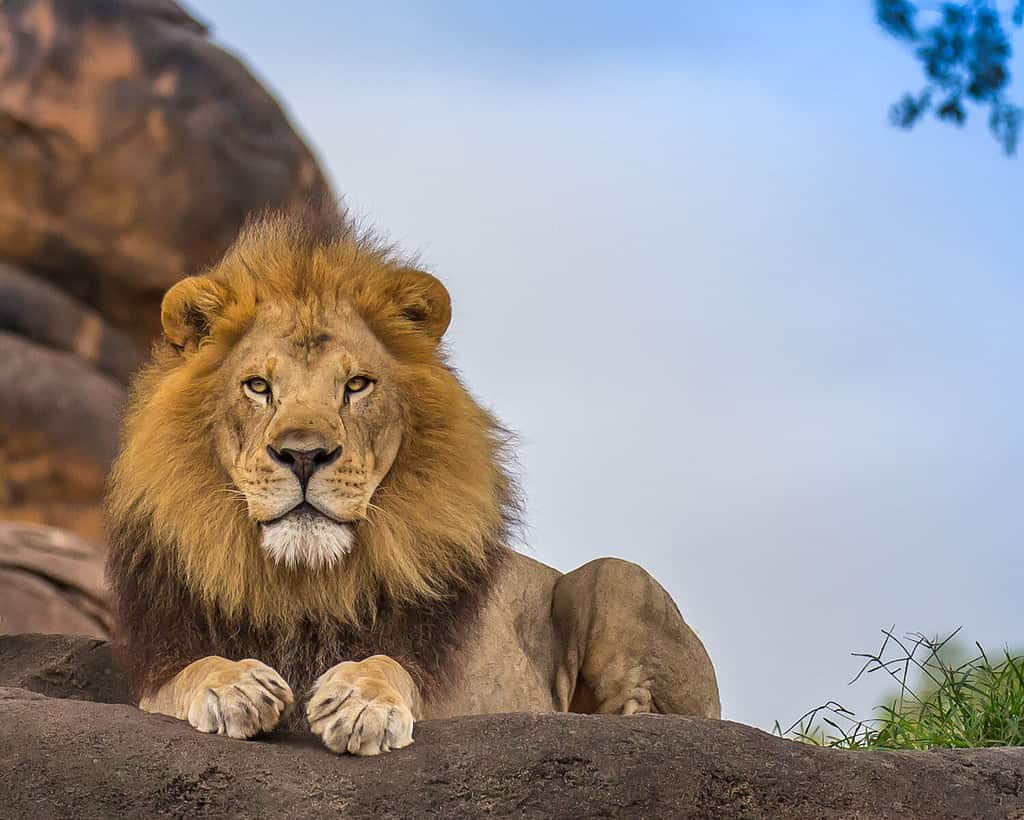
Despite being called the “King of the Jungle,” lions do not live in the jungle.
©Jrossphoto/Shutterstock.com
Lions are massive cats, weighing up to 550 pounds! Despite the fact that they primarily live in grasslands, lions have been deemed the “King of the Jungle”. Lions have formidable front legs and large, strong jaws with canines up to 3 inches long. Their fur is a golden-yellow hue, and the adult males boast bushy manes varying from blonde to reddish-brown to dark.
Their diet consists exclusively of flesh, primarily zebra and wildebeest. They are found in diverse environments, from open grasslands to dense shrubs and arid thorn forests.
28. Goat (Capra aegagrus hircus)
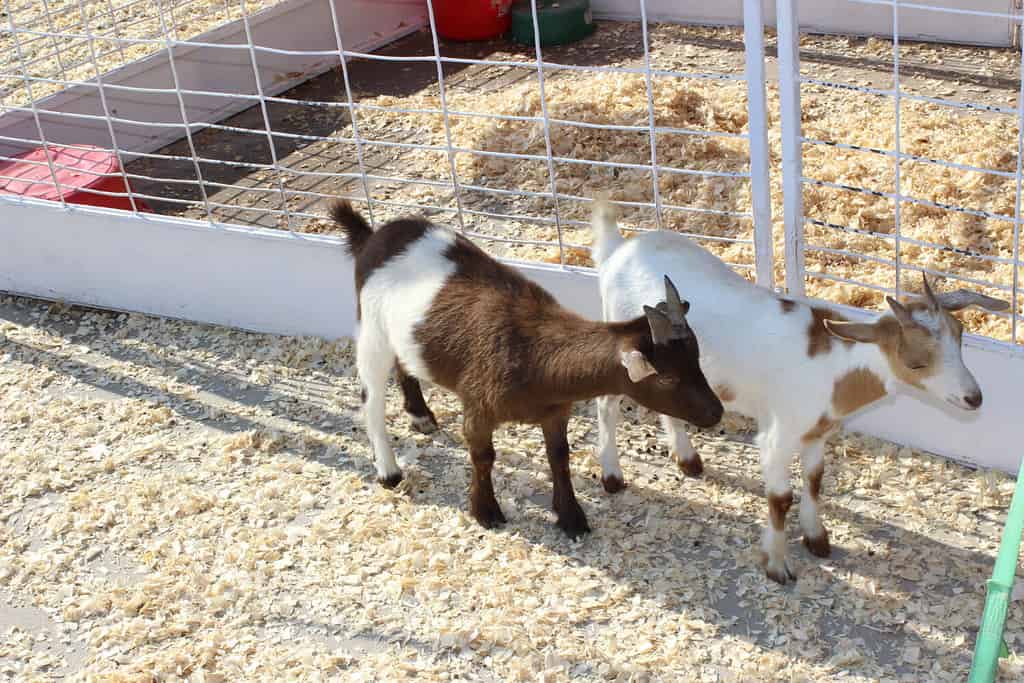
Goats are domesticated for their milk, meat, and fur.
©Jon Kraft/Shutterstock.com
Goats, relatives of sheep, have a lighter structure, backward-curving horns, a short tail, and more straight hair. They feed on forages, hays, barley, corn, and distilled grains. Commonly found in farms, forests, scrubs, and areas with abundant grass and shrubs.
29. Kudu (Tragelaphus strepsiceros)
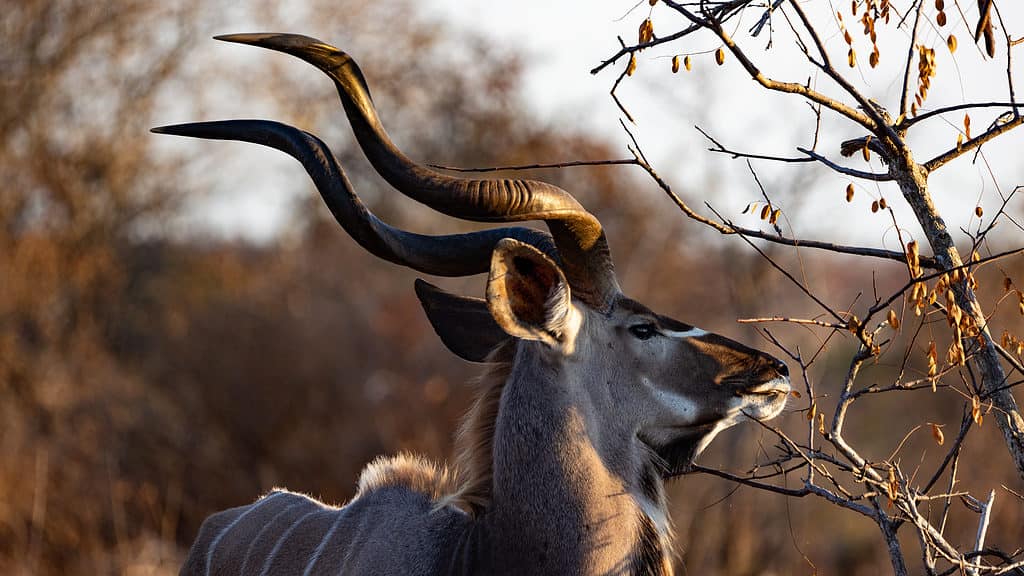
Male kudu have large horns that they can use for defense.
©Jurgens Potgieter/Shutterstock.com
The greater and lesser kudus are a species of antelope native to Africa. They feature body stripes and spots as well as a white chevron between the eyes. These antelopes primarily consume plant leaves and shoots, inhabiting woodland and bushland areas.
30. Clam (Bivalvia)
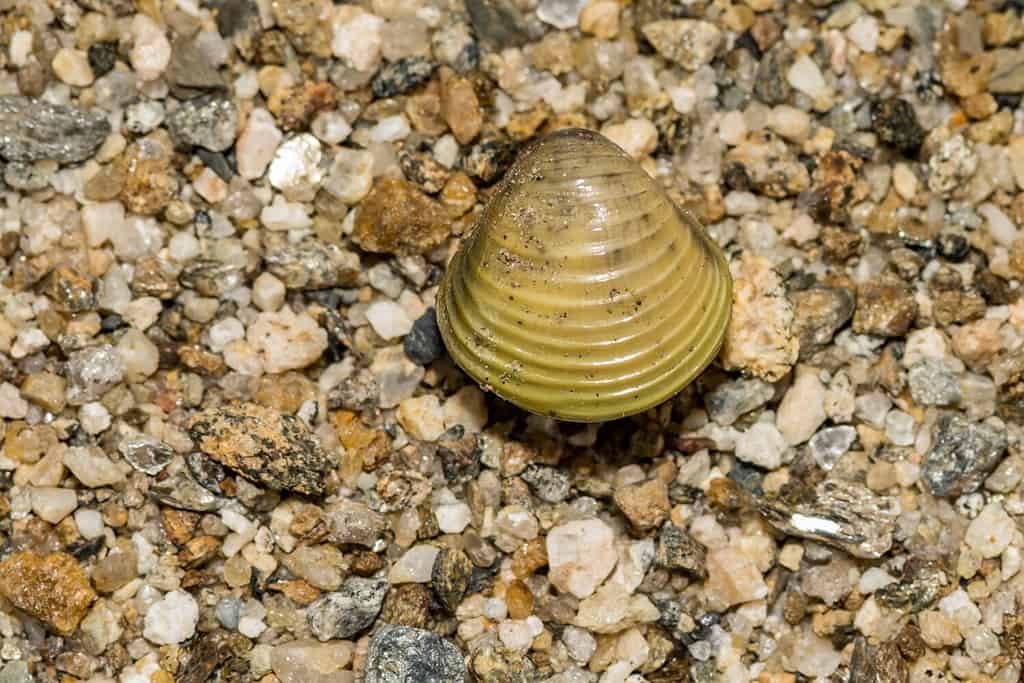
A clam is a shelled animal that resides on the bottom of bodies of water.
©Jay Ondreicka/Shutterstock.com
Clam refers to multiple species of mollusks with two-part shells. Their diet includes plankton, algae, and organic material, and they can be found in both freshwater and saltwater habitats.
31. Hawk (Buteo)

A large predatory bird that can be found around the globe is the hawk.
©ranchorunner/Shutterstock.com
Hawks possess lengthy tails and compact wings, enabling them to swiftly and deftly navigate through terrains with foliage. Equipped with potent beaks and talons, they expertly capture and subdue their prey.
Predominantly feeding on small mammals, hawks favor habitats like deserts and open fields.
32. Vole (Microtus)
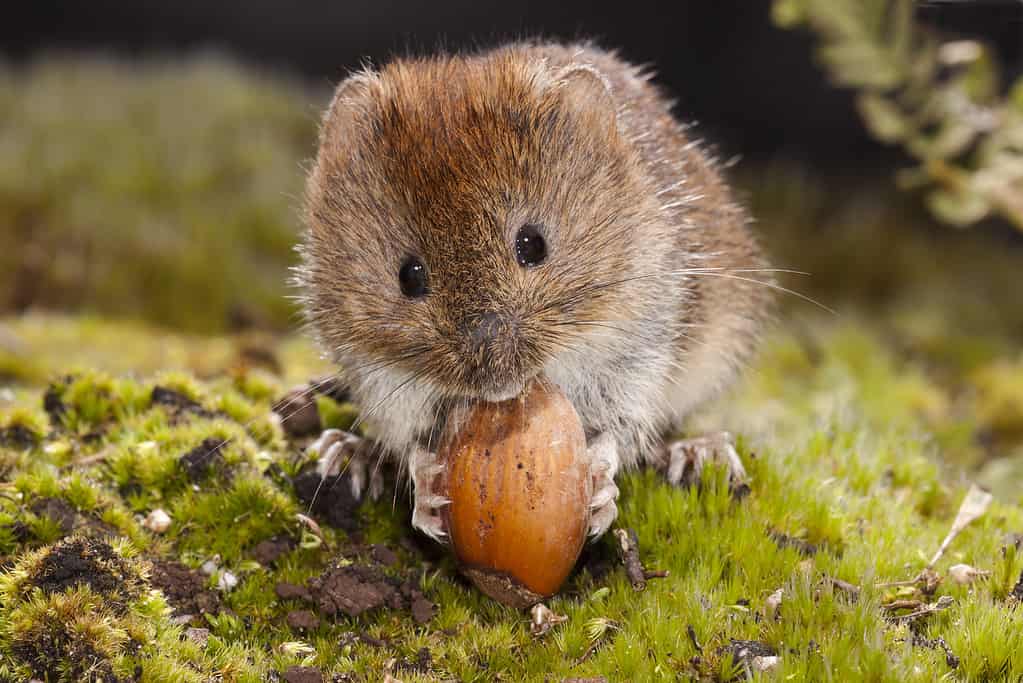
This small rodent is known as a vole.
©iStock.com/AGAMI stock
Voles have a stout build, with a brownish-black coat, almost non-existent tails, petite dark eyes, and rounded muzzles. Their furry, rounded ears are quite small. Herbivorous by nature, they consume grasses, plants, bulbs, and tubers, typically found in meadows or other open spaces.
33. Toad (Bufo bufo)

While similar to frogs, toads live primarily on land rather than in the water.
©Viktor Loki/Shutterstock.com
Toads exhibit colors ranging from dark brown and grey to olive green and sandy shades, featuring broad bodies, warty skin, and a tendency to walk rather than hop.
Their diet consists of insects and arthropods, and they usually favor wet, open areas like fields and grasslands.
34. Gnat (Diptera)
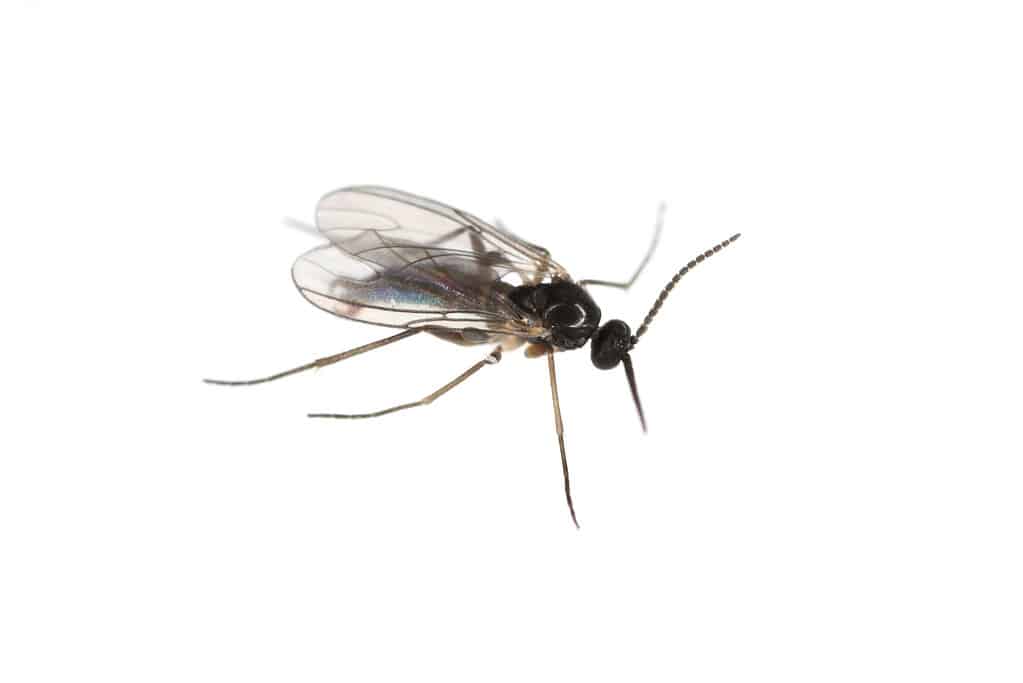
This is a (very) zoomed-in photo of a gnat.
©iStock.com/Tomasz Klejdysz
Gnat refers to numerous tiny, winged insects within the fly family, typically resembling a slender, minuscule fly with long legs, a small head, and a thin body. Most gnats feed on plant parts like fruits, stems, and leaves and primarily inhabit and breed in damp, shaded, decaying organic matter.
35. Dodo (Raphus cucullatus)
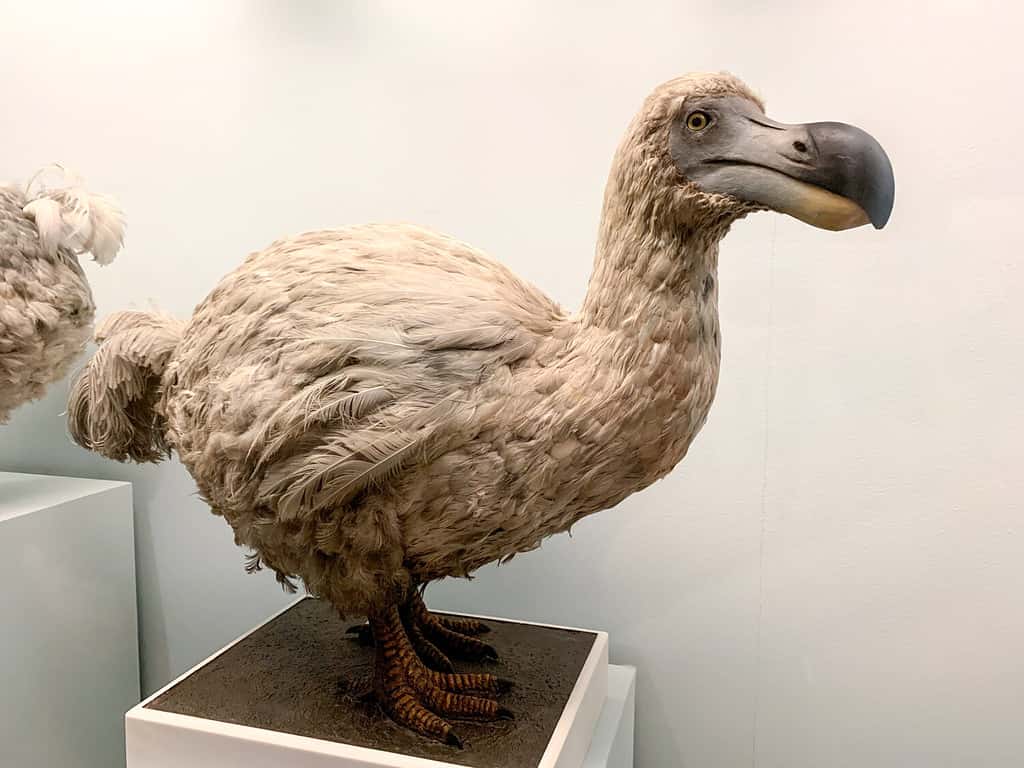
The dodo bird quickly went extinct in the late 1600s due to hunting and habitat destruction from human settlement.
©The Art of Pics/Shutterstock.com
Dodo was a large, flightless bird, now extinct, with blue-grey feathers, a black bill with a reddish tip, small wings, strong yellow legs, and a bunch of curly feathers at its rear.
It ate seeds, nuts, bulbs, roots, and fallen fruits and was exclusively found on the island of Mauritius.
36. Mink (Neovison vision)

These animals spend much of their time in and around the water.
©John Pitcher/iStock via Getty Images
Mink are similar to weasels and ferrets, with slender bodies, bushy tails, tiny ears, and small eyes. They are omnivorous, eating anything they can capture, and usually favor wooded regions near water bodies.
37. Tuna (Thunnini)
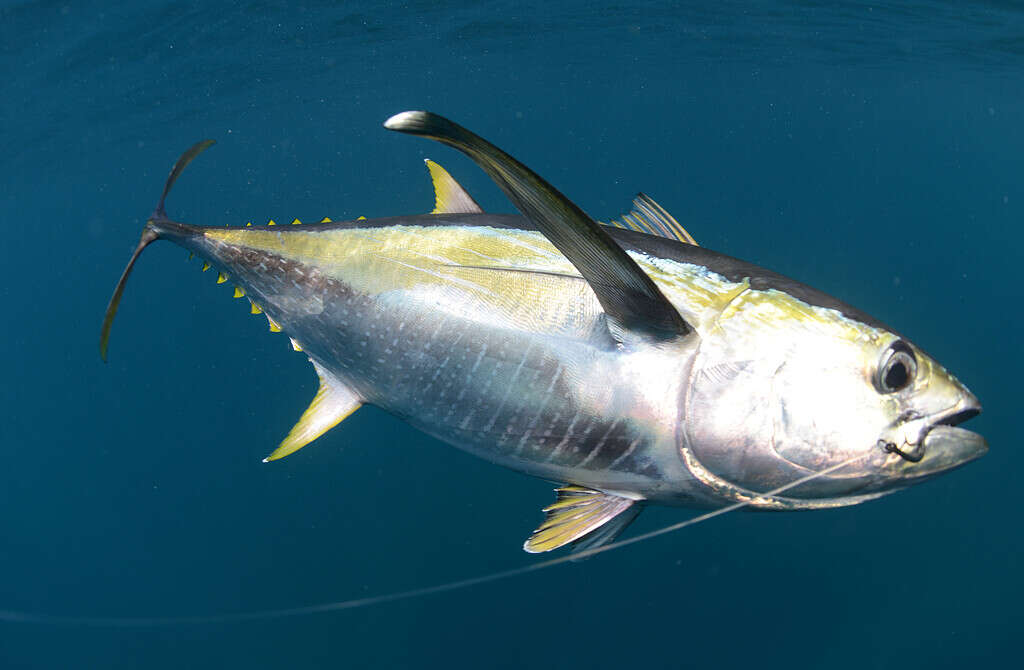
Americans eat over a billion pounds of canned tuna every year!
©FtLaudGirl/ via Getty Images
Tuna is another animal with 4 letters. This fish has a sturdy, streamlined form with a round body that narrows down to a thin tail base and a forked or crescent tail. They feed on various fish, shellfish, and squids. These fish inhabit diverse locations, from coastal estuaries to alpine tarns.
38. Dove (Columbidae)
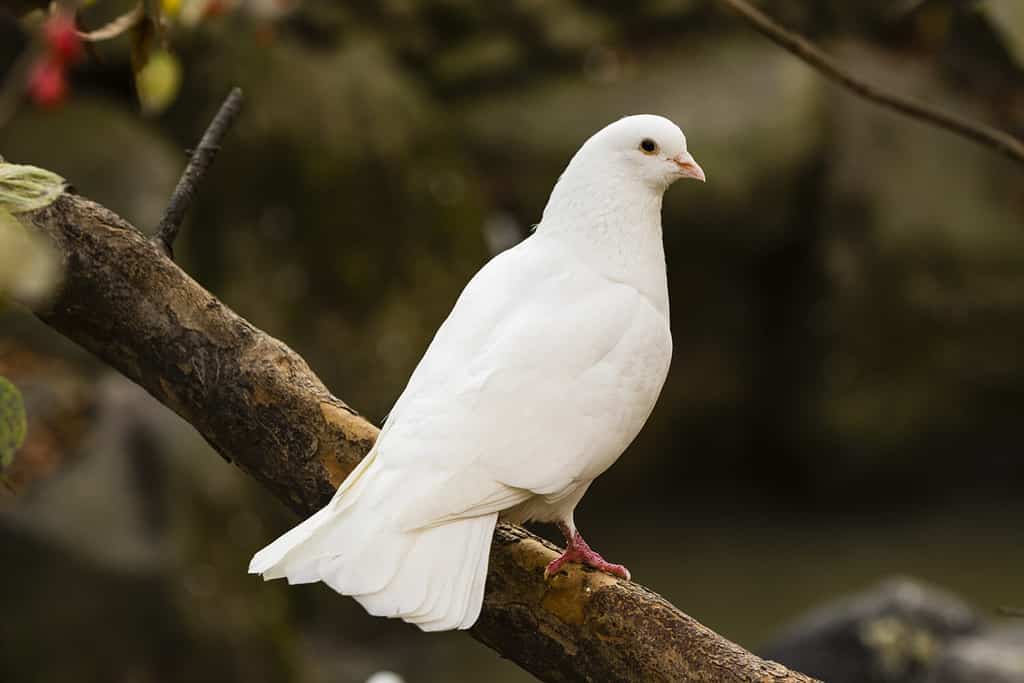
This beautiful white bird is a dove.
©Rene Baars/Shutterstock.com
Doves have plump bodies and long tails, contrasted by short legs, a small beak, and heads that appear especially small compared to the body. Their diet consists mainly of seeds, nuts, and grains, and they inhabit places ranging from savannas and deserts to temperate forests.
39. Newt (Salamandridae)

While they look like lizards, newts are amphibians that spend up to 8 minutes at a time underwater.
©iStock.com/epantha
Newts possess bodies resembling lizards with four limbs and elongated tails. While most have smooth, damp skin, some, like the rough-skinned newts, exhibit coarse, textured skin. Their diet includes insects, mollusks, and fish. They inhabit gardens, pastures, and open woodlands.
40. Mole (Talpidae)
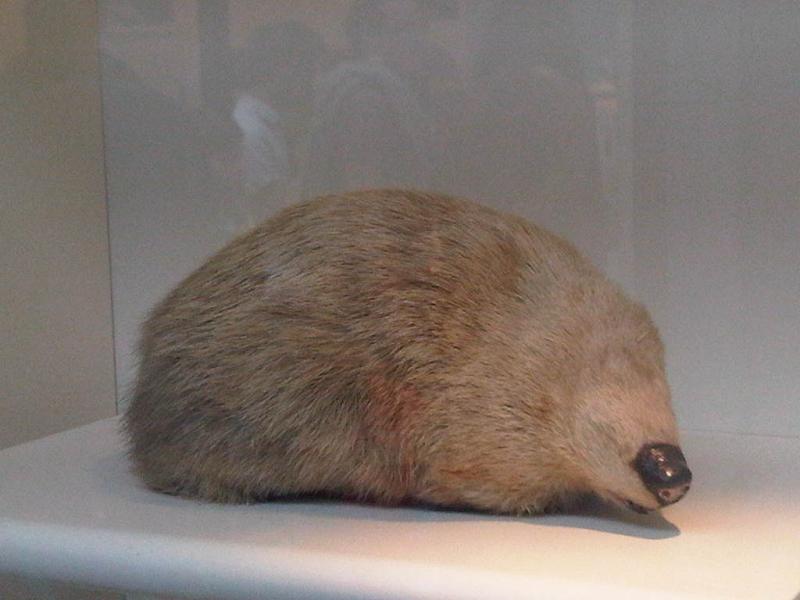
These rodents spend their entire lives under the ground.
©Emőke Dénes, CC BY-SA 4.0, via Wikimedia Commons – License
Moles are subterranean creatures with tube-shaped bodies, soft fur, and barely visible eyes and ears, diminished hind legs, and strong front limbs equipped with sizable paws for digging.
They mainly feed on earthworms, insects, and snails. They inhabit areas including woodlands, grasslands, and sand dunes.
Summary of Awesome 4-Letter Animals
| Animal | Scientific Name |
|---|---|
| Slug | Gastropoda |
| Lynx | Felis lynx |
| Dory | Zeus faber |
| Boar | Sus scrofa |
| Coot | Fulica |
| Cusk | Brosme brosme |
| Pika | Ochotona |
| Zebu | Bos indicus |
| Bear | Ursidae |
| Crab | Brachyura |
| Deer | Cervidae |
| Ibis | Threskiornithinae |
| Moth | Lepidoptera |
| Wolf | Canis lupus |
| Seal | Pinnipedia |
| Swan | Cygnus |
| Wasp | Vespidae |
| Carp | Cyprinus carpio |
| Puma | Puma concolor |
| Rhea | Rhea americana |
| Mule | Equus asinus × Equus caballus |
| Flea | Siphonaptera |
| Pike | Esox lucius |
| Duck | Anas platyrhyncos |
| Crow | Corvus |
| Wren | Troglodytidae |
| Lion | Panthera leo |
| Goat | Capra aegagrus hircus |
| Kudu | Tragelaphus strepsiceros |
| Clam | Bivalvia |
| Hawk | Buteo |
| Vole | Microtus |
| Toad | Bufo bufo |
| Gnat | Diptera |
| Dodo | Raphus cucullatus |
| Mink | Neovison vison |
| Tuna | Thunnini |
| Dove | Columbidae |
| Newt | Salamandridae |
| Mole | Talpidae |
The photo featured at the top of this post is © iStock.com/epantha
Thank you for reading! Have some feedback for us? Contact the AZ Animals editorial team.






